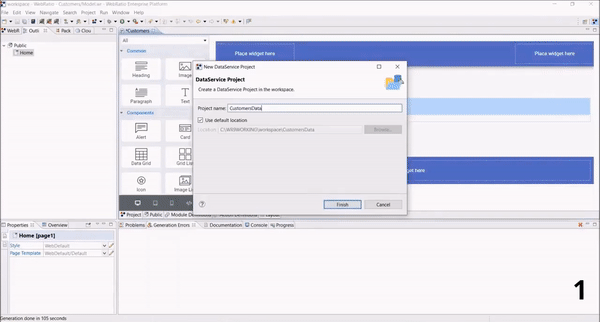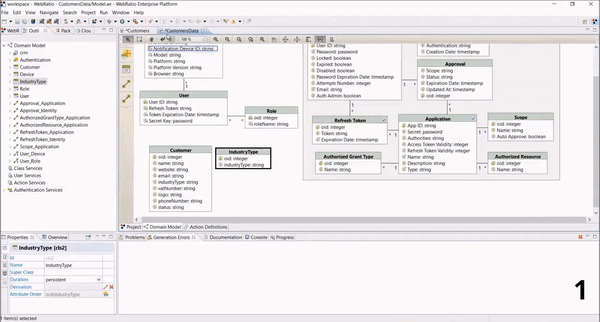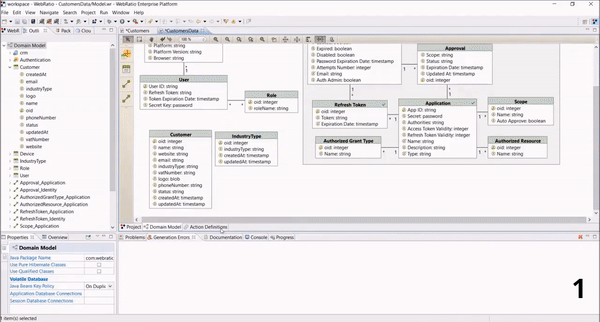How Low-Code simplifies microservice creation and management

Microservices[1] are synonymous with simplification[2] because they transform large monolithic applications[3] into modular systems composed of components that perform specific activities, creating a decentralized architecture[4] and simplifying applications’ development, maintenance and scalability.
Companies are aware of these systems’ benefits, demonstrated by the fact that a compound annual growth rate of the microservices market of 18.6% by 2026[5] is expected and large companies use them in at least 75% of cases[6]
The advantages of microservices
The advantages of microservices are many. Here are the main ones[7;8] :
- separate development, maintenance and scalability between microservices;
- organization of development in teams focused only on a microservice;
- development quality improvement: focusing on a small and well-defined service allows you to create high-quality microservices;
- faster deployment because only the affected microservice can be released and you don’t have to wait for the entire application to be released;
- isolation of errors because a problem can be limited to a microservice and does not affect the entire application;
- security monitoring because, as errors are isolated, one microservice’s security problems do not affect the other microservices;
- compatibility with CI/CD and Agile, or the integration of microservices into more efficient development methods;
- simplification of scalability, i.e. the increase in a single microservice’s functionality without having to touch the other microservices as well as the reuse of microservices in other applications that you want to scale.
How WebRatio Platform simplifies and accelerates the development of microservices
WebRatio Platform accelerates the creation of microservices, thanks to the use of the low-code method for defining services, made possible with the creation of data-service applications and the natively cloud-ready architecture.
The Data-Service applications allow you to define the Domain Model of microservices through a visual diagram [1] that describes the structure of the information the application manages. The Domain Model can also be connected to an external data source and can import and publish the desired objects in the model [2].

Thanks to the Low-Code approach, with a few clicks, it is possible to publish the CRUD operations (create, read, update and delete) [1] of each element of the domain, configuring the RBAC (role-based access control) rules for protection and personalization of data access. The result of the automatic generation is an application/microservice that exposes the services’ functioning APIs, the documentation of which is available within the system itself [2], also useful in the unit test of the services.

It is also possible to create services with complex logic that go beyond the simple creation and publication of content. Using the visual modeling of actions, we describe [1] the services’ input/output interfaces [2] and the flow of the execution logic through the composition of many elementary operations [3] [4]. You can then also expose these services via API by configuring the access rules according to the user’s role [5].

These Low-Code tools allow you to simplify the development cycle of microservices and integration with external and third-party systems, also increasing development efficiency. Together with the possibility of teamwork, they allow for the adoption of Agile or CI/CD methodologies[9] that let you to focus on the continuous innovation of applications, business systems or customer services, enabling the release of high-quality systems.
Do you know the advantages of Low-Code for companies? Download the infographic >
Sources
[1] https://en.wikipedia.org/wiki/Microservices
[3] https://en.wikipedia.org/wiki/Monolithic_application
[5] https://www.alliedmarketresearch.com/microservices-architecture-market
[7] https://dzone.com/articles/7-benefits-of-microservices-architecture#:~:text=By%20working%20in%20focused%20modules,high%2Dquality%20pieces%20of%20code
[8] https://www.javatpoint.com/advantges-and-disadvantages-of-microservices
Latest Stories
CIO priority for 2026: boosting productivity, including Low-Code
Customised AI in 1 Month with Low-Code: AI Mind by OriginalSkills
WebRatio Platform 9.3.0: more autonomy, more productivity, more control – and a new look for your apps
Tag
AllArtificial Intelligence - AI
BPA Development
BPM Software
Customer
Digital Transformation
Distribution & Retail
Energy & Utilities
Enterprise Applications
Finance & Insurance
IoT
LinkedIn Live
Low-code
Manufacturing
Mobile Development
Modernization
Partner
Shadow IT
Travel & Transportation
Web Development
WebRatio Platform